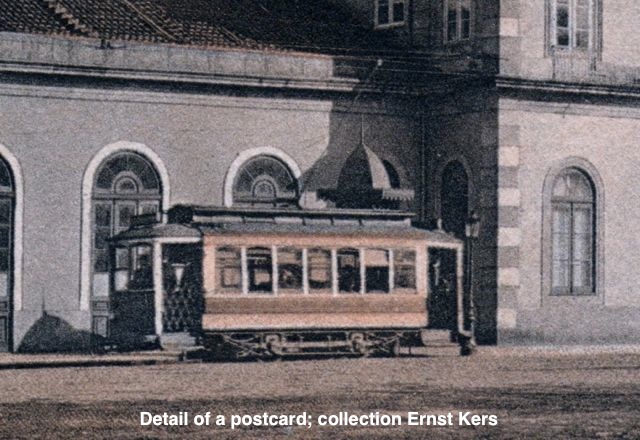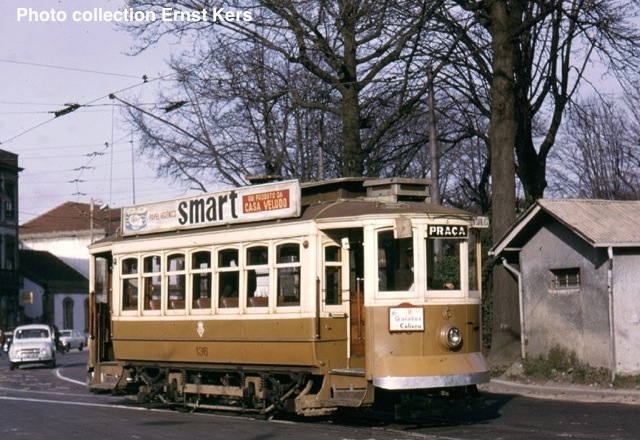Brill-23
In 1909 the CCFP ordered 20 cars from Brill with seven windows at each side and seating for 23. These four-wheel cars were built to the by Brill patented semi-convertible design. Together with the Ingleses these were the first tramcars with closed platforms. In 1910 a second batch of 25 cars of this type was acquired. The saloons of these cars were 33 cm longer, a feature which can be recognised by comparing the width of the corner pillars. In 1912 a third batch of again 20 cars was ordered from Brill. The saloons of these cars were 7½ cm longer than those of the second batch.- 1909 order; in service 1910; electric equipments GE80; original numbers 251-270
- 1910 order; in service 1911/2; electric equipments Siemens; original numbers 271-295
- 1912 order; in service 1913/4; electric equipments Siemens; original numbers 171-190
Technical data
- length 9.30 m
- width 2.25 m
- weight 11700 kg
- truck Brill 21E
- wheelbase 2.15 m
- motorpower 2 x 55 hp
- motortype GE 270
- controller GE B54E
- seating 23
Photos

A Brill tram of the 1909 order in 1910/1 in front of the Campanhã railway station

A Brill-23 tram around 1970